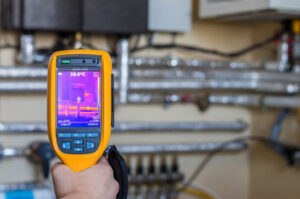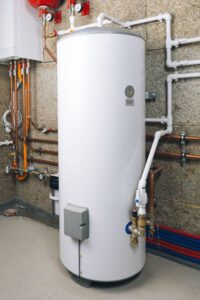Rankd Daddy Review is an excellent means of earning a 6-figure income from the comfort of your home. Many people have seen massive success with this program, and it has the potential to change your life.
The Rank Daddy Elite cost is tailored to each individual and depends on their knowledge level, goals, and needs. Currently, it costs $1,947 to enroll for lifetime membership.

If you’re looking for a digital marketing training course that will teach you how to start a local SEO agency, you should look into the Rank Daddy academy. This academy offers up-to-date modules and a private Slack community for support. Moreover, the Academy will help you understand how to optimize your client’s website and increase organic traffic. This will improve your search engine optimization ranking and boost your business revenue.
The Rank Daddy academy has an extensive online presence, including a website and social media profiles. This demonstrates that they are dedicated to keeping their online reputation clean. They also share success stories and testimonials from their students, which gives the program credibility. Moreover, their online presence shows that they’re committed to offering value and transparency to potential customers.
Whether you’re a beginner or an experienced marketer, the Rank Daddy academy has a solution for you. Their training programs are designed to be straightforward and easy-to-understand. They include training videos and Google sheets that can be used immediately. These resources will help you track your performance and progress. You can even get a refund within 30 days if you’re not satisfied with the course.
Moreover, the Academy will provide you with an opportunity to learn from the best in the industry. They have a dedicated team of coaches that will teach you the necessary skills and strategies to succeed. They will also help you create a business plan and find the right niche. Lastly, they’ll provide you with a list of keywords to target and a free SEO analysis of your site.
The Rank Daddy academy focuses on providing step-by-step instructions for creating and growing online businesses. This training is available to people from all backgrounds and promises to guide them on their journey to financial freedom. The program requires around 10 hours per week of learning, and it is a great option for people who want to work from home.
Brandon Olson created Rank Daddy as a method of making money through local lead generation. He has been in the marketing industry since 2003 and has an established reputation for his techniques. Moreover, his methods have been proven to be effective and have helped many people achieve success.
It’s affordable
Rankd Daddy is one of the best digital marketing courses that will help you to earn money online. It’s a complete package that includes everything you need to start a successful SEO business. You’ll learn about the best techniques for ranking websites on Google and how to set up a client prospecting system. The course also covers how to outsource tasks, which can help you scale your business faster than your competition.
Besides offering comprehensive training, Rank Daddy is also a great resource for newcomers to the online marketing world. Their website features a number of resources to help you get started, including a free training video and an exclusive Facebook group for students. This group allows you to discuss challenges and receive support from fellow members.
In addition to the introductory training videos, Rank Daddy provides tutorials and live coaching sessions. You can ask questions during the live session and get immediate feedback from instructors. This is a great way to learn SEO without having to spend a lot of time and energy.
Aside from the introductory training, Rank Daddy has several other courses that you can take to learn more about digital marketing. The most popular is the Rank Daddy Elite program, which costs $1,947. The price may seem steep, but you can always ask for a refund if you’re not satisfied with the program.
The premise behind Rank Daddy is that you can make money by generating leads for local businesses. It can be a lucrative career for those who are willing to put in the work. However, it’s important to know that you won’t earn a living overnight. The program can take a while before you see results. This is why you should consider other options if you’re not comfortable waiting for results.
It’s legit
Rank Daddy is an online course created by Brandon Olsen that teaches participants how to start and grow their own local SEO agency. It includes a comprehensive training program and supportive community that help students succeed. It also offers a generous money-back guarantee in case the course doesn’t work for them. The website of Rank Daddy is easy to navigate and offers a lot of valuable insights on search engine optimization.
Its legitimacy can be judged based on its reputation and the success stories of its participants. Many people have used Rank Daddy to transform their lives, transitioning from beginner to successful SEO agency owners. They have also gained a competitive advantage over their competitors by learning to use effective outsourcing strategies.
In addition to the comprehensive SEO training, Rank Daddy teaches its students how to close a deal and build a network of clients. This gives them an edge in the market and allows them to make more money from their business. It also teaches them how to get paid up front before starting work, which is a big selling point for most potential clients.
Those who want to learn SEO from a reputable source should look for the following qualities: Real-World Street Credibility: The guru’s background and reputation in the industry can indicate how legit they are. Coaching and Community: Whether or not the course offers coaching and support through private Facebook groups is another important factor to consider. Course Material Value: Is the course relevant and useful, or is it just fluff? Also, how often is the course updated?
Those who are not a natural at marketing should avoid the Rank Daddy course. However, if you have a good understanding of the basics and have a strong work ethic, this program can be very lucrative. In fact, you can even create a passive income that lets you travel around Europe or live in a cabin in the woods writing books or hiking the Appalachian Trail. The key to success is finding a system that works for you and stick with it.
It’s a scam
As more people are looking to make a living online, digital marketing courses have become popular. One such course is Rank Daddy, which claims to teach individuals how to run their own SEO agency. However, is Rank Daddy legit? To answer this question, it is important to understand the background of the company and its operational methods. In addition, you should also consider whether the program is suitable for your needs and learning style.
Founded by Brandon Olson, Rank Daddy is an online marketing course that teaches students how to rank websites and generate leads. It is available to individuals from all backgrounds and promises to help them achieve financial success. Its step-by-step process teaches students how to start their own businesses and provides access to various tools and resources. Moreover, it helps them build and grow their online businesses.
The course’s curriculum includes a series of video lessons on various topics, including ranking strategies, link building, on-page SEO, outsourcing, training videos, keyword research, and client prospecting. It also offers twice-weekly live coaching calls. Those who attend these calls are given the opportunity to ask questions and get quick answers. In addition, the website features a comprehensive resource library and an exclusive Facebook group.
While some critics claim that Rank Daddy is a scam, others have found that the program is legitimate. The website’s testimonials include examples of a rise in revenue and successful client acquisition. The site’s training programs are also affordable, and the program’s instructors have years of experience in the industry.
In order to learn how to run a digital marketing business, you need to understand the basics of SEO. While there are many free resources on the Internet, a professional can guide you through the process. Moreover, a professional will help you avoid common mistakes that can make your website unproductive.
The cost of a Rank Daddy membership can be expensive, but the price is well worth it. In addition to the monthly subscription fees, there are other costs associated with the program, such as a web hosting and domain ($25), call tracking services (Callrail) ($45 to $145), email autoresponders ($15), and competitor keyword research tools ($33 to $199). These costs can add up quickly.







